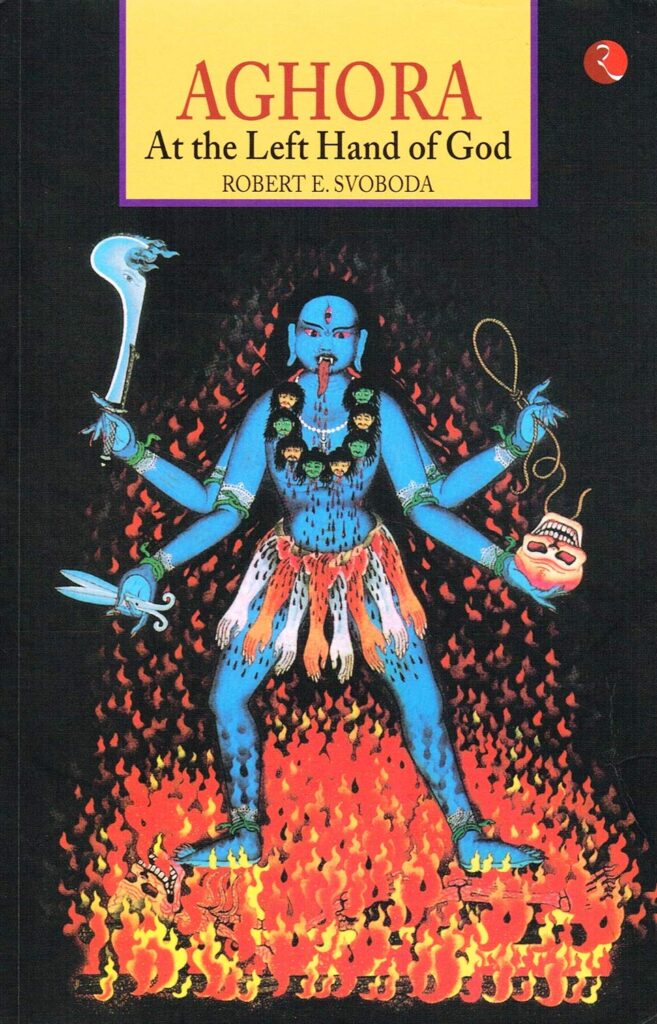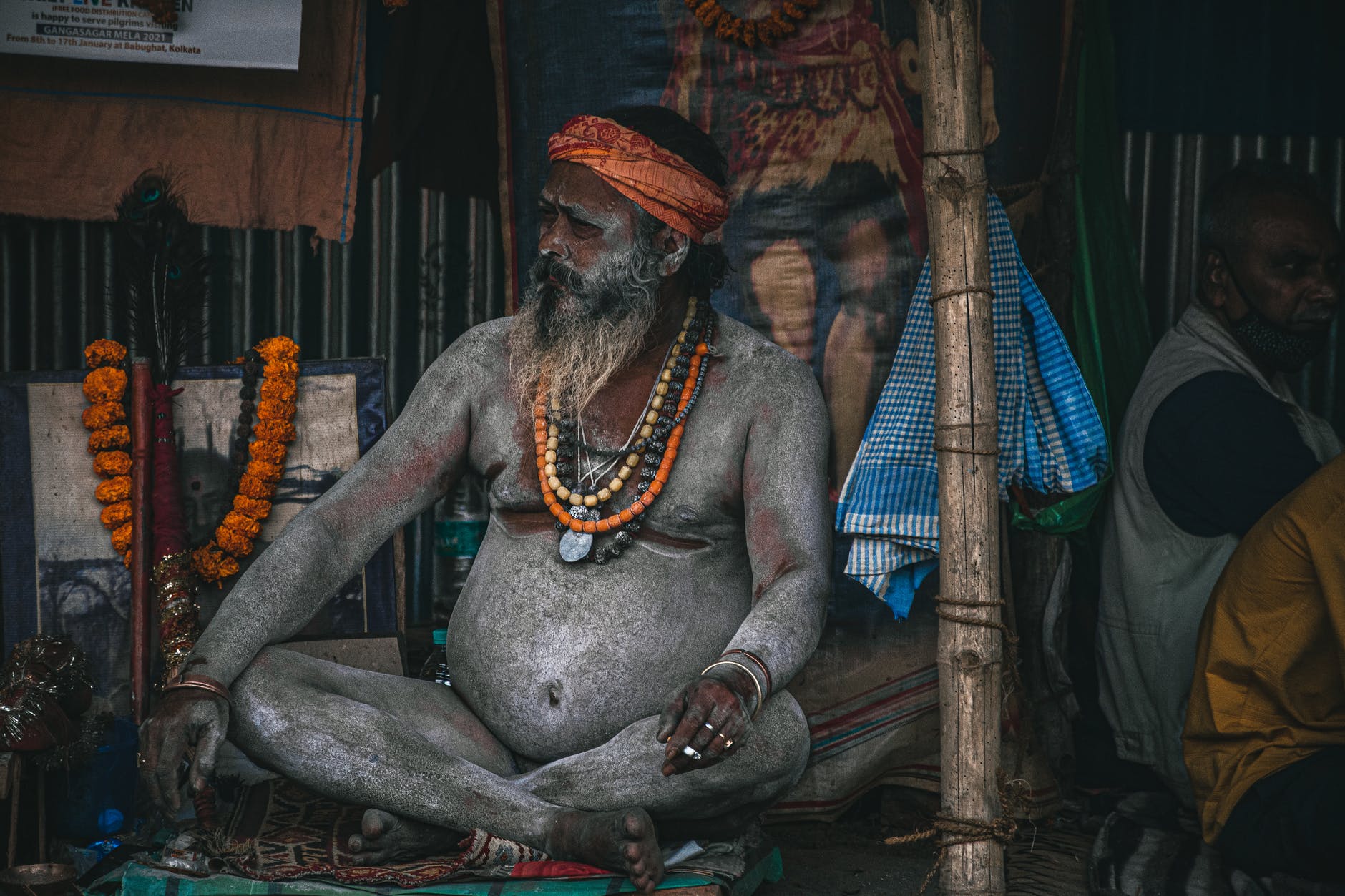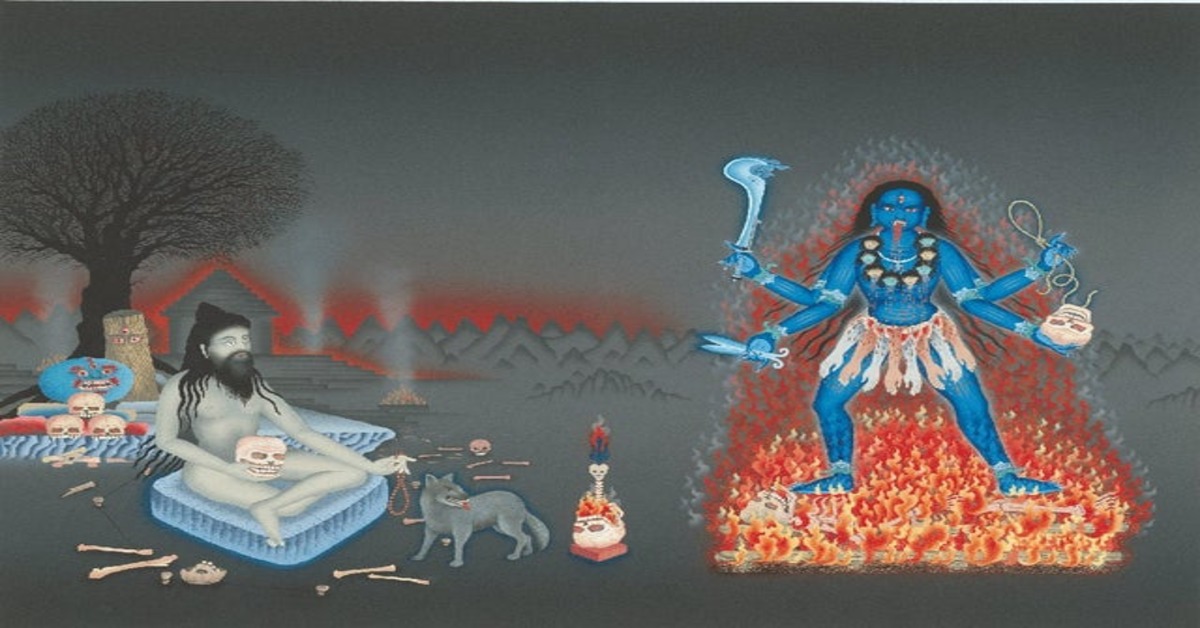Before understanding the left hand of tantra, it is important to explain the two traditional ways in yoga for enlightenment.
Yoga has two paths for self-realization or enlightenment:
- Path of direct awareness – formless meditation on the self for direct realization
- Path of technique – path involving techniques and rituals for gradual realization of the self (eg. left hand tantra and right hand tantra)
Tantra belongs to the second path, i.e., a path of techniques that involves Mantra, Yantra, Japa, etc. The first path is generally represented by the Advaita or non-dualistic philosophies. Advaita emphasizes the direct realization of the Self as the Absolute (Brahman).
Tantra on the other hand believes that direct realization of the self is difficult and requires preparation of the mind and body before it can be attained. Therefore, the path of tantra is a gradual path, and for most the feasible path for self-realization.
Tantra is divided into two paths:
- Dakshinachara – Right-handed Path
- Vamachara – Left-handed path
Yes, you heard it right. Some tantric teachers also believe that attachment to purity becomes an obstacle in the path to self-realization. They believe that forbidden actions, substances and things have their importance in helping a person break through this attachment.
The right-handed path of tantra relies on a high degree of purity in conduct and action. The left-handed path of tantra is a more unorthodox path that allows the use of meat and various sexual practices that are forbidden in the right-handed path.
The right-handed path belongs to the Samaya lineage. Samaya means ‘according to rules’ i.e., with strict adherence to dharmic principles. The left-handed path belongs to the Kaula lineage. Kaula means ‘according to family’ which implies variations in practices are allowed according to the local customs [2].
The right-handed path is considered more suitable for those of devotional temperament – bhaktas. The left-handed path of tantra is generally considered more suitable for those with heroic temperament or active temperament – viras.
The left-handed path allows for rituals and practices that are unorthodox and outside the rules of yoga practice and Hindu social dharma. Despite its differences, the Kaula Path (left-handed path) contains many overlaps with the traditional Hindu practices.

The Use of Five Forbidden Things in Left Hand Tantra:
The left-handed Tantra prescribes the use of five forbidden things also called the five ‘M-s’ or ‘Makaras.’
- Maithuna, sexual union
- Mada, wine (and other intoxicants)
- Mamsa, meat
- Matsya, fish
- Mudra, parched grains (or money)
Other traditions of Yoga and Hinduism condemn these five things because they bring dullness to the mind. Even in left-handed tantra, their usage is methodical and carefully planned. Tantra doesn’t recommend their usage for the mere purpose of self-enjoyment.
Left-handed tantra is further divided into two categories. The ‘symbolic’ and the ‘literal’, depending on whether these five substances are used metaphorically or literally [1].
The Symbolic Tradition
In the symbolic tradition, the five Makara’s are used only as symbols. For e.g.,
- Maithuna or Intercourse is the symbolic union of Shiva and Shakti, the cosmic male and female forces within the psyche [1].
- Intoxication is a metaphor to represent the blissful state of pure consciousness attained during meditation.
These were a few examples of the symbolic usage of the five ‘M’s.’ If looked at it this way, the symbolic path and the right-handed path (which closely with traditional yogic and dharmic rules) are similar.
The Literal Tradition
The literal tradition involves the usage of five forbidden things as sacred rituals. The main concept behind the use of these five forbidden things is to go beyond sense gratification. Since these five things have the most hold over the senses, using them to overcome the senses is the careful trick deployed by the left hand of tantra.
It is extremely difficult to give-up attachments in a culture that already promotes materialism in excess. Therefore, it becomes essential to experience certain things before we can go beyond them.
In most left-handed tantric traditions, these five things are turned into sacred actions and offered to a deity, in order to transcend their desire.

Breaking the attachment to Purity
Yes, you heard it right. Some tantric teachers also believe that attachment to purity becomes an obstacle in the path to self-realization. They believe that forbidden actions, substances and things have their place in helping to break through this attachment.
In the yogic tradition, there are three qualities or gunas of a person that bind the soul.
- Attachment to Tamas (darkness and dullness) – attachment to sex or intoxicants
- Attachment to Rajas (activity and turbulence) – attachment to activity and forms of self-expressions like art and music
- Attachment to Sattva (purity) – attachment to the idea of being holy and living a pure lifestyle
Mind is not free from all attachments, even if it is an attachment to the holy.
It is believed in Tantric traditions that people boasting and claiming about being pure and holy are only doing so for appearance. They are caught up in the appearance of being spiritual. And so, the mere idea of purity becomes an obstacle towards further spiritual growth. Mind is still not free from all attachments, even if it is an attachment to the holy.
Usually, the left hand of tantra is restricted for such Sattvic people, people who are too attached to the concept of purity. Besides the five forbidden things, their tantric teacher or guru would suggest to them other unholy acts break from this bondage. This may include:
- Meditation on cremations grounds
- Eating the flesh of a dead animal.
- Drinking unclean water
- Applying fresh ash on the body
- Wearing no cloths and roaming naked
These are just a few of the methods.
Precautions
- People of Rajas and Tamas qualities – this includes most of the people in this modern world – this path is not suitable and very dangerous. Most of us are already too attached to drama, sensation and intoxicating substances. Indulging in them further would only grow our attachments.
- This path was meant for sattvic people as a shock therapy. If one is already excited by the thoughts of these forbidden practices, then this path is clearly not meant for such a person.
- Authentic left hand tantra teachers are not in favor of wide spread use of such practices.
- It is easy to be exploited by people who claimed to have mastered their senses but still indulge in such acts for sense gratification at the expense of their disciples.
- Such practices can be used to justify unlawful and exploitative activities.
References
- Book: Tantric Yoga and The Wisdom Goddesses by Dr David Frawley
- Book: History of the tantric religion by Narendra Nath Bhattacharyya

1 thought on “Left Hand Tantra: Use of Five Forbidden Things (Sex, Intoxicants, etc.) To Break Attachment”